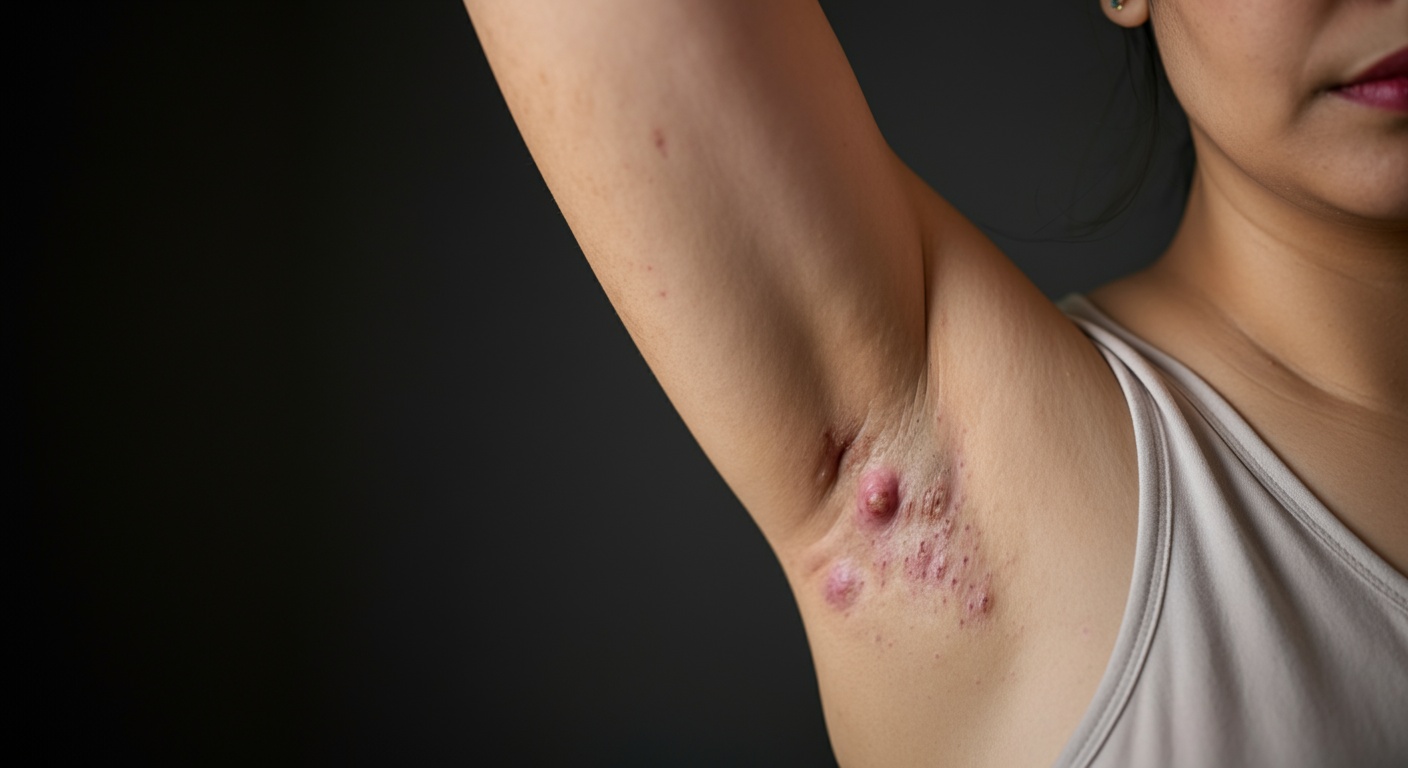We are experiencing a new era of transparency when it comes to aesthetic treatments, even the most invasive ones... Once a hush-hush procedure reserved for Hollywood’s elite, the facelift is undergoing a cultural renaissance spurred on by celebrity influence. Just look at how Kris Jenner's candidness about her recent facelift sent the internet into a frenzy.
A concerning trend we are seeing on the back of this is an increasing number of people in their 20s and 30s turning to facelifts to achieve a 'snatched aesthetic.'
This week, 28-year-old Jade Mandongwe appeared on ITV's This Morning to talk to presenters Cat Deeley and Ben Shephard about her decision to go under the knife in Turkey last month.
The trainee solicitor started getting filler and anti-wrinkle injections at 24, but when she was 26, she decided that it wasn't working for her anymore, so she started looking into surgery.
'Looking tired' and rapid weight loss also added to her reasoning to opt for a mid face-lift and brow lift. These are the same reasons many other patients of Mandongwe's age are opting for surgical intervention.
From filters to facelifts
The facelift’s patient demographic is rapidly shifting. While most candidates remain in their 50s and 60s, there’s been a noticeable rise in people in their 30s and 40s, and even younger, exploring “early maintenance facelifts” or “mini-lifts” to address skin laxity before it becomes pronounced.
"I think my generation and slightly older, we've grow up on filters," Mandongwe explained on This Morning.
"That can influence how you want to look, especially if you see yourself in real life, you're not going to look like a Snapchat filter. I wasn't going for that aesthetic. But sometimes it does make you think maybe I could get something slightly lifted."
In recent reports, The British Association of Aesthetic Plastic Surgeons (BAAPS) has noted that less invasive techniques, such as the short-scar facelift, which targets the lower face and jawline, have become particularly popular among younger patient groups for their subtle and effective outcomes. Meanwhile, the deep-plane facelift is trending on social media.
“Demographically, we’re seeing more patients in their late 30s and early 40s seeking surgery as a preventative measure rather than waiting until ageing becomes advanced,” notes Mr Ali Ghanem, consultant plastic and reconstructive surgeon and founder of The Ghanem Clinic in London. “It reflects a more educated, empowered population that views facial rejuvenation as part of long-term self-care rather than crisis correction.”
Ms Nora Nugent, consultant plastic surgeon and president of BAAPS, agrees that social and cultural factors are driving younger interest, particularly the rise of social media and the “snatched” aesthetic. But she cautions against chasing trends:
“Celebrity influence and the desire for a contoured appearance have driven this surge,” she says. “This is an area and a group of patients that we need to be very cautious with and very honest about what is involved, what is realistic, and when it is reasonable or justifiable to undertake a surgical facelift. We need to maintain our moral and ethical compasses and assess and treat the patient in front of us rather than the trend or quest for perfection or an unattainable aesthetic.”
Miss Natasha Berridge, consultant maxillofacial and facial plastic surgeon, echoes thoughts on how this new age transparency, around aesthetic procedures, is driving young people towards dramatic intervention.
“The big difference between now and 20 years ago is the way in which people think they are medically informed, and it’s because of social media. Everything has become so accessible now, whereas it didn’t used to be,” she says.
“To see a before and after, it used to be in the surgeon’s office. Now everything is open and on view for anyone to see. You’ve got surgeons using Snapchat and those who are very obviously marketing through social media, which has a huge impact on young, vulnerable people. The information is no longer being filtered to age-appropriate people.”
“Youngsters don’t see their faces in reality anymore; they see themselves through pictures, and as a consequence, they have become hypercritical.”
BAAPS vice president Mr Anthony Macquillan believes that the rise in facelifts may also reflect wider social dynamics. “With the pension age rising and many seeking to remain visible and confident in professional environments, surgery can be both an aesthetic and functional choice,” he says. “We also believe the ‘Zoom effect’ – increased time spent seeing ourselves virtually – has heightened awareness of facial ageing across all age groups.”
When does a young facelift make sense?
There are some situations in which our surgeons say a facelift in a younger patient is warranted.
“The concept of lifting a face as a structural intervention in a young person who needs it for a congenital reason isn’t an absurdity,” says Miss Berridge. “That’s actually the medical need.”
“For a small subset of younger patients, those with congenital asymmetry, early jowling or skin laxity from extreme weight loss or another medical reason, a mini or endoscopic facelift can be appropriate,” adds Mr Ghanem.
“But for most, non-surgical interventions, good skincare, and regenerative therapies are sufficient. The decision should always be driven by anatomy, not trend.”
Ozempic face
Another contributing factor is the rising popularity of GLP-1 receptor agonist medications such as Ozempic and Wegovy, which are now widely used for weight management across all age groups. While these medications can lead to significant weight loss and associated health benefits, they may also result in facial volume loss and skin laxity.
“There have been two significant shifts in facelift patient demographics in the last five years. The first is an increasing number of patients who have lost a significant amount of weight by using GLP-1 weight loss medications,” says Ms Nugent. “We have always treated patients after weight loss, but the numbers have increased a lot with the wider use of weight loss medications.”
Filler fatigue
The second shift, says Ms Nugent, is an increasing number of patients who are opting for surgery over non-surgical or medical aesthetic techniques. “They are coming to this decision either because they have reached the limitations of non-surgical treatments and want a greater effect or because they prefer a longer-lasting single intervention over repeated milder interventions over many years,” she says.
Mr Ghanem agrees that, the filler boom has influenced the facial surgery landscape. “We’re now seeing many patients with ‘filler fatigue’, such as over-volumised, distorted features caused by years of injectables. These patients are turning to surgery, seeking a reset.”
From tightening to re-structure: inside the modern lift
The term “facelift” still conjures images of taut skin, mumification-level bandaging and weeks of downtime. But that picture is rapidly fading thanks to advances in surgical technique and anatomical understanding.
“The last five years have completely reshaped the facelift landscape,” says Dr Ghanem. “We’ve moved from procedures that simply tighten the skin to ones that restructure the face anatomically.”
At the core of this evolution is the deep-plane facelift – a technique that repositions the superficial musculoaponeurotic system (SMAS) and platysma layers as a single unit, restoring natural volume and movement. Endoscopic approaches are further refining this by allowing the deeper layers to be lifted through tiny incisions hidden in the hairline.
“The combination of deep-plane and endoscopic techniques has made facelifts both more precise and more natural,” adds Mr Ghanem. “We’re repositioning rather than stretching tissues, minimising surface trauma and visible scarring.”
While trending techniques such as deep plane and endoscopic facelifts are not new, they have all been refined and advanced, resulting in improved results.
“The most significant advances in facelift procedures are due to ongoing greater understanding of anatomy and how the facial tissues can be manipulated to give a long-lasting but natural outcome,” says Ms Nugent. “We have also learnt from the past and know how to avoid some of the previous problems such as stretched scars, stretched earlobes, lateral sweeps, etc.”
At his clinic, Mr Ghanem recently introduced ‘The Snatched Lift,’ an innovative endoscopic minimal-scar facelift, developed in collaboration with Professor Erdem Tezel.
“This procedure represents the next generation of facial rejuvenation,” he says. “Using a slender endoscope, we can visualise and lift the deeper structures of the face and brow without extensive dissection. The result is elegant, regenerative, and virtually undetectable.”
Read more about how the facelift is evolving in 2026 and beyond in the November/December issue.



